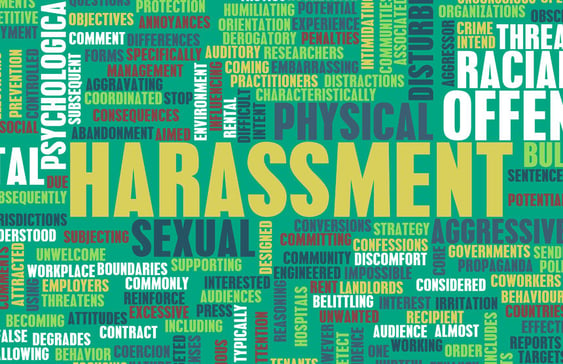
The EEOC formed a task force in 2015 to study Harassment in the Workplace. This task force spent 18 months examining the complex issues associated with Harassment in the workplace. The taskforce released these key findings:
1) Workplace Harassment Remains a Persistent Problem:
- 1/3 of the 90,000 charges received by the EEOC in fiscal year 2015 included an allegation of workplace harassment.
2) Workplace Harassment Too Often Goes Unreported:
- Employees who experience harassment fail to report the harassing behavior or to file a complaint because they fear disbelief of their claim, inaction on their claim, blame or social or professional retaliation
3) There is a compelling business case for stopping and preventing harassment.
- Last year, EEOC alone recovered 164.5 million for workers alleging harassment and these direct costs are just the tip of the iceberg and do not include the soft costs of said harassment in the workplace.
4) It starts at the Top - Leadership and Accountability Are Critical
- Workplace culture has the greatest impact on allowing harassment to flourish, or conversely, in preventing harassment. Effective harassment prevention efforts, and workplace culture in which harassment is not tolerated, must start with and involve the highest level of management of the company. All levels, across all positions, an accountability system must ensure that those who engage in harassment are held responsible in a meaningful, appropriate, and proportional manner, and that those whose job it is to prevent or respond to harassment should be rewarded for doing that job well. Leadership means ensuring that anti-harassment efforts are given the necessary time and resources to be effective.
5) Training must change
- Effective training can reduce workplace harassment. Ineffective training can be unhelpful or even counterproductive. Effective training cannot occur in a vacuum, it must be part of a holistic culture of non harassment that starts at the top. Training most be tailored to the specific workforce and workplace and to different employees. When trained properly, the middle managers and first-line supervisors can be an employer's most valuable resource in preventing and stopping harassment.
To see more recommendations along with a number of other helpful tools to aid in designing effective anti harassment policies, please see www.eeoc.gov.






Let Us Know What You Thought about this Post.
Put your Comment Below.